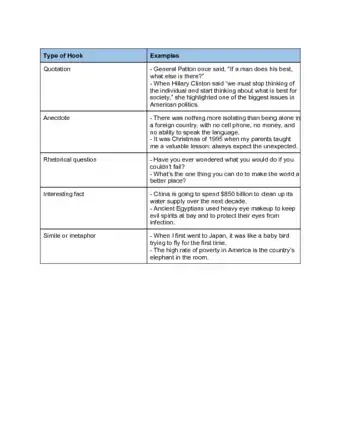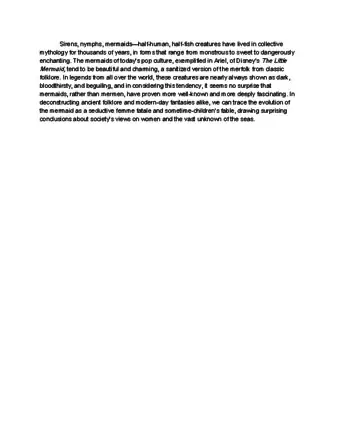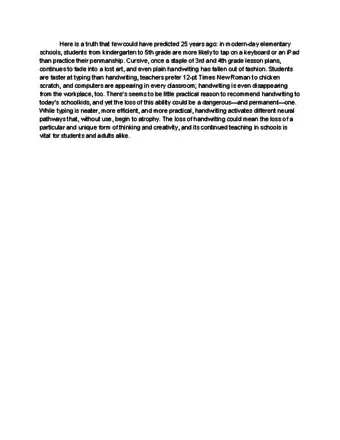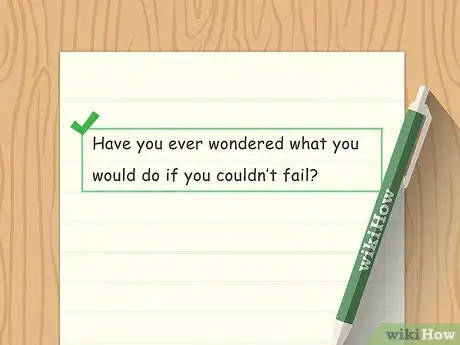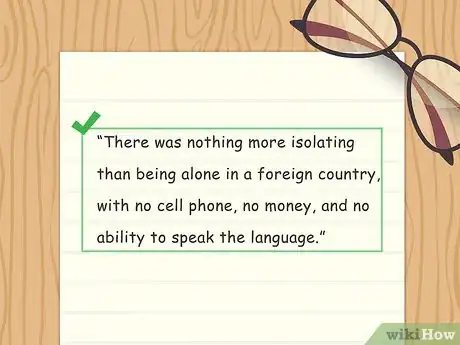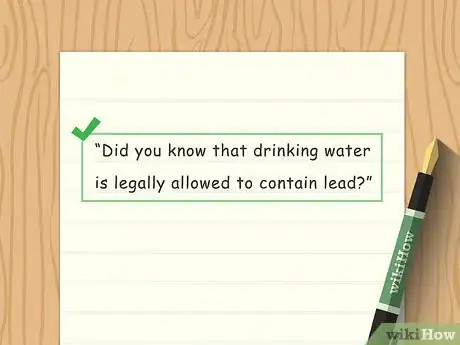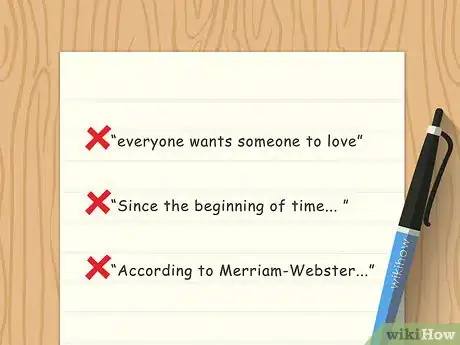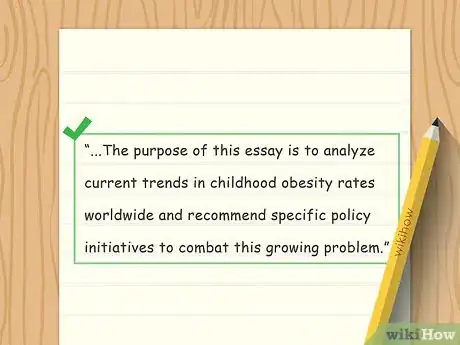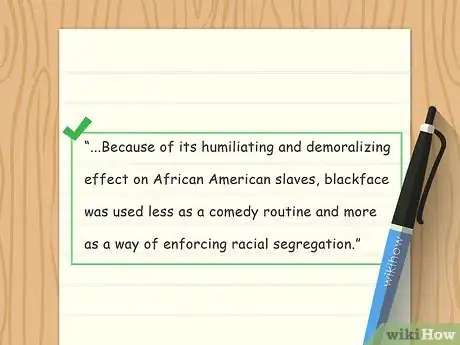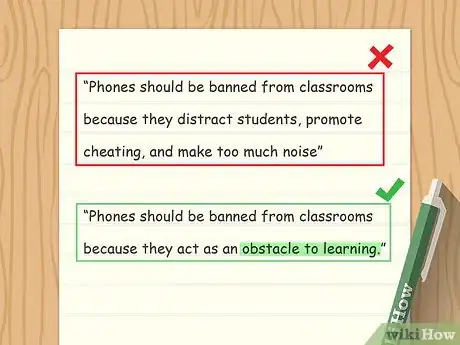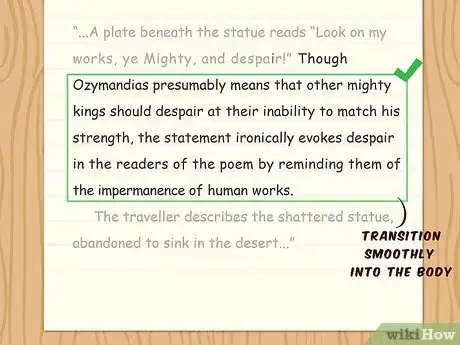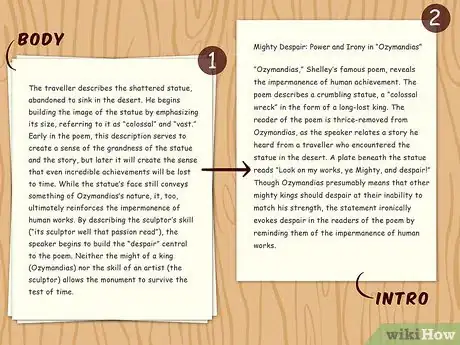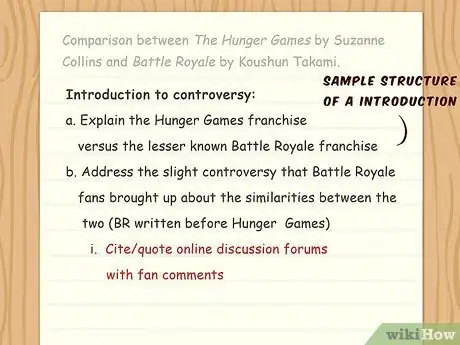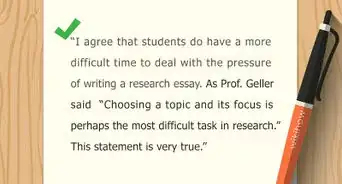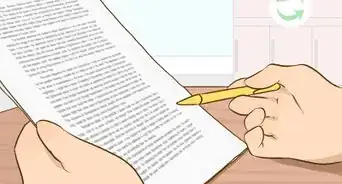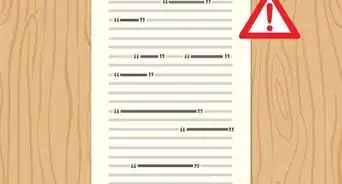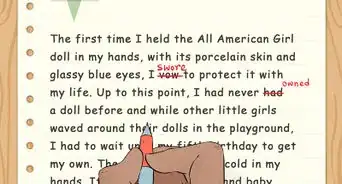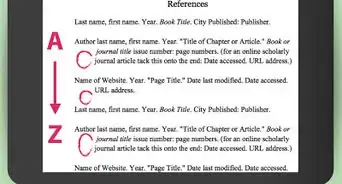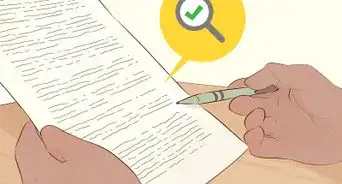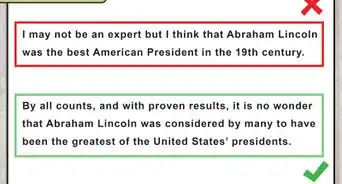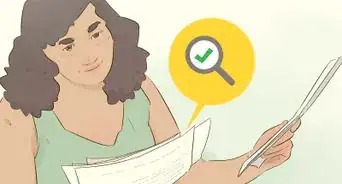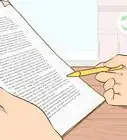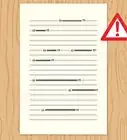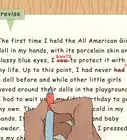This article was co-authored by Jake Adams and by wikiHow staff writer, Jennifer Mueller, JD. Jake Adams is an academic tutor and the owner of Simplifi EDU, a Santa Monica, California based online tutoring business offering learning resources and online tutors for academic subjects K-College, SAT & ACT prep, and college admissions applications. With over 14 years of professional tutoring experience, Jake is dedicated to providing his clients the very best online tutoring experience and access to a network of excellent undergraduate and graduate-level tutors from top colleges all over the nation. Jake holds a BS in International Business and Marketing from Pepperdine University.
There are 12 references cited in this article, which can be found at the bottom of the page.
wikiHow marks an article as reader-approved once it receives enough positive feedback. This article received 38 testimonials and 90% of readers who voted found it helpful, earning it our reader-approved status.
This article has been viewed 4,210,969 times.
The introduction of your essay serves two important purposes. First, it gets your reader interested in the topic and encourages them to read what you have to say about it. Second, it gives your reader a roadmap of what you're going to say and the overarching point you're going to make – your thesis statement. A powerful introduction grabs your reader's attention and keeps them reading.
Steps
Sample Essay Hooks & Introductions
Hooking Your Reader
-
1Identify your audience. The first sentence or two of your introduction should pull the reader in. You want anyone reading your essay to be fascinated, intrigued, or even outraged. You can't do this if you don't know who your likely readers are.[1]
- If you're writing a paper for a class, don't automatically assume your instructor is your audience. If you write directly to your instructor, you'll end up glossing over some information that is necessary to show that you properly understand the subject of your essay.
- It can be helpful to reverse-engineer your audience based on the subject matter of your essay. For example, if you're writing an essay about a women's health issue for a women's studies class, you might identify your audience as young women within the age range most affected by the issue.
-
2Use the element of surprise. A startling or shocking statistic can grab your audience's attention by immediately teaching them something they didn't know. Having learned something new in the first sentence, people will be interested to see where you go next.[2]
- For this hook to be effective, your fact needs to be sufficiently surprising. If you're not sure, test it on a few friends. If they react by expressing shock or surprise, you know you've got something good.
- Use a fact or statistic that sets up your essay, not something you'll be using as evidence to prove your thesis statement. Facts or statistics that demonstrate why your topic is important (or should be important) to your audience typically make good hooks.
Advertisement -
3Tug at your reader's heart-strings. Particularly with personal or political essays, use your hook to get your reader emotionally involved in the subject matter of your story. You can do this by describing a related hardship or tragedy.[3]
- For example, if you were writing an essay proposing a change to drunk driving laws, you might open with a story of how the life of a victim was changed forever after they were hit by a drunk driver.
-
4Offer a relevant example or anecdote. In your reading and research for your essay, you may have come across an entertaining or interesting anecdote that, while related, didn't really fit into the body of your essay. Such an anecdote can work great as a hook.[4]
- For example, if you're writing an essay about a public figure, you might include an anecdote about an odd personal habit that cleverly relates back to your thesis statement.
- Particularly with less formal papers or personal essays, humorous anecdotes can be particularly effective hooks.
-
5Ask a thought-provoking question. If you're writing a persuasive essay, consider using a relevant question to draw your reader in and get them actively thinking about the subject of your essay.[5]
- For example: "What would you do if you could play God for a day? That's exactly what the leaders of the tiny island nation of Guam tried to answer."
- If your essay prompt was a question, don't just repeat it in your paper. Make sure to come up with your own intriguing question.
-
6Avoid clichés and generalizations. Generalizations and clichés, even if presented to contrast with your point, won't help your essay. In most cases, they'll actually hurt by making you look like an unoriginal or lazy writer.[6]
- Broad, sweeping generalizations may ring false with some readers and alienate them from the start. For example, "everyone wants someone to love" would alienate someone who identified as aromantic or asexual.
Creating Your Context
-
1Relate your hook to a larger topic.[7] The next part of your introduction explains to your reader how that hook connects to the rest of your essay. Start with a broader, more general scope to explain your hook's relevance.[8]
- Use an appropriate transitional word or phrase, such as "however" or "similarly," to move from your specific anecdote back out to a broader scope.
- For example, if you related a story about one individual, but your essay isn't about them, you can relate the hook back to the larger topic with a sentence like "Tommy wasn't alone, however. There were more than 200,000 dockworkers affected by that union strike."
-
2Provide necessary background information. While you're still keeping things relatively general, let your readers know anything that will be necessary for them to understand your main argument and the points you're making in your essay.[9]
- For example, if your thesis relates to how blackface was used as a means of enforcing racial segregation, your introduction would describe what blackface performances were, and where and when they occurred.
- If you are writing an argumentative paper, make sure to explain both sides of the argument in a neutral or objective manner.
-
3Define key terms for the purposes of your essay. Your topic may include broad concepts or terms of art that you will need to define for your reader. Your introduction isn't the place to reiterate basic dictionary definitions. However, if there is a key term that may be interpreted differently depending on the context, let your readers know how you're using that term.[10]
- Definitions would be particularly important if your essay is discussing a scientific topic, where some scientific terminology might not be understood by the average layperson.
- Definitions also come in handy in legal or political essays, where a term may have different meanings depending on the context in which they are used.
-
4Move from the general to the specific. It can be helpful to think of your introduction as an upside-down pyramid. With your hook sitting on top, your introduction welcomes your readers to the broader world in which your thesis resides.[11]
- If you're using 2 or 3 sentences to describe the context for your thesis, try to make each sentence a bit more specific than the one before it. Draw your reader in gradually.
- For example, if you're writing an essay about drunk driving fatalities, you might start with an anecdote about a particular victim. Then you could provide national statistics, then narrow it down further to statistics for a particular gender or age group.
Presenting Your Thesis
-
1Make your point. After you've set up the context within which you're making your argument, tell your readers the point of your essay. Use your thesis statement to directly communicate the unique point you will attempt to make through your essay.[12]
- For example, a thesis for an essay on blackface performance might be "Because of its humiliating and demoralizing effect on African American slaves, blackface was used less as a comedy routine and more as a way of enforcing racial segregation."
- Be assertive and confident in your writing. Avoid including fluff such as "In this essay, I will attempt to show...." Instead, dive right in and make your claim, bold and proud.
- Your outline should be specific, unique, and provable. Through your essay, you'll make points that will show that your thesis statement is true – or at least persuade your readers that it's most likely true.
-
2Describe how you're going to prove your point. Round out your introduction by providing your readers with a basic roadmap of what you will say in your essay to support your thesis statement. In most cases, this doesn't need to be more than a sentence.[13]
- If you've created an outline for your essay, this sentence is essentially the main subjects of each paragraph of the body of your essay.
- For example, if you're writing an essay about the unification of Italy, you might list 3 obstacles to unification. In the body of your essay, you would discuss details about how each of those obstacles was addressed or overcome.
- Instead of just listing all of your supporting points, sum them up by stating "how" or "why" your thesis is true. For example, instead of saying, "Phones should be banned from classrooms because they distract students, promote cheating, and make too much noise," you might say "Phones should be banned from classrooms because they act as an obstacle to learning."
-
3Transition smoothly into the body of your essay. In many cases, you'll find that you can move straight from your introduction to the first paragraph of the body. Some introductions, however, may require a short transitional sentence at the end to flow naturally into the rest of your essay.[14]
- To figure out if you need a transition sentence, read the introduction and the first paragraph out loud. If you find yourself pausing or stumbling between the paragraphs, work in a transition to make the move smoother.
- You can also have friends or family members read your easy. If they feel it's choppy or jumps from the introduction into the essay, see what you can do to smooth it out.
Bringing It All Together
-
1Read essays by other writers in your discipline. What constitutes a good introduction will vary widely depending on your subject matter. A suitable introduction in one academic discipline may not work as well in another.[15]
- If you're writing your essay for a class assignment, ask your instructor for examples of well-written essays that you can look at. Take note of conventions that are commonly used by writers in that discipline.
- Make a brief outline of the essay based on the information presented in the introduction. Then look at that outline as you read the essay to see how the essay follows it to prove the writer's thesis statement.
-
2Keep your introduction short and simple. Generally, your introduction should be between 5 and 10 percent of the overall length of your essay.[16] If you're writing a 10-page paper, your introduction should be approximately 1 page.
- For shorter essays under 1,000 words, keep your introduction to 1 paragraph, between 100 and 200 words.
- Always follow your instructor's guidelines for length. These rules can vary at times based on genre or form of writing.
-
3Write your introduction after you write your essay. Some writers prefer to write the body of the essay first, then go back and write the introduction. It's easier to present a summary of your essay when you've already written it.[17]
- As you write your essay, you may want to jot down things you want to include in your introduction. For example, you may realize that you're using a particular term that you need to define in your introduction.
-
4Revise your introduction to fit your essay. If you wrote your introduction first, go back and make sure your introduction provides an accurate roadmap of your completed paper. Even if you wrote an outline, you may have deviated from your original plans.[18]
- Delete any filler or unnecessary language. Given the shortness of the introduction, every sentence should be essential to your reader's understanding of your essay.
-
5Structure your introduction effectively.[19] An essay introduction is fairly formulaic, and will have the same basic elements regardless of your subject matter or academic discipline. While it's short, it conveys a lot of information.[20]
- The first sentence or two should be your hook, designed to grab your reader's attention and get them interested in reading your essay.
- The next couple of sentences create a bridge between your hook and the overall topic of the rest of your essay.
- End your introduction with your thesis statement and a list of the points you will make in your essay to support or prove your thesis statement.
Expert Q&A
-
QuestionHow do you write an introduction paragraph?
 Jake AdamsJake Adams is an academic tutor and the owner of Simplifi EDU, a Santa Monica, California based online tutoring business offering learning resources and online tutors for academic subjects K-College, SAT & ACT prep, and college admissions applications. With over 14 years of professional tutoring experience, Jake is dedicated to providing his clients the very best online tutoring experience and access to a network of excellent undergraduate and graduate-level tutors from top colleges all over the nation. Jake holds a BS in International Business and Marketing from Pepperdine University.
Jake AdamsJake Adams is an academic tutor and the owner of Simplifi EDU, a Santa Monica, California based online tutoring business offering learning resources and online tutors for academic subjects K-College, SAT & ACT prep, and college admissions applications. With over 14 years of professional tutoring experience, Jake is dedicated to providing his clients the very best online tutoring experience and access to a network of excellent undergraduate and graduate-level tutors from top colleges all over the nation. Jake holds a BS in International Business and Marketing from Pepperdine University.
Academic Tutor & Test Prep Specialist Start with a hook to get your reader interested. Then, once you have their attention, give them some context about what you're going to talk about.
Start with a hook to get your reader interested. Then, once you have their attention, give them some context about what you're going to talk about. -
QuestionHow do I start a paper about extreme sports that kids play?
 Alexander Peterman, MAAlexander Peterman is a Private Tutor in Florida. He received his MA in Education from the University of Florida in 2017.
Alexander Peterman, MAAlexander Peterman is a Private Tutor in Florida. He received his MA in Education from the University of Florida in 2017.
Test Prep Tutor I would first narrow your subject down to one sport so you can be more focused. Note that this will likely be an informative essay. After you do this, an interesting hook statement may be an anecdote describing an intense moment in that chosen sport to get your audience interested. This can be made up or from your own experience with the sport.
I would first narrow your subject down to one sport so you can be more focused. Note that this will likely be an informative essay. After you do this, an interesting hook statement may be an anecdote describing an intense moment in that chosen sport to get your audience interested. This can be made up or from your own experience with the sport. -
QuestionHow can I start an essay about HIV and lifestyle?
 Alexander Peterman, MAAlexander Peterman is a Private Tutor in Florida. He received his MA in Education from the University of Florida in 2017.
Alexander Peterman, MAAlexander Peterman is a Private Tutor in Florida. He received his MA in Education from the University of Florida in 2017.
Test Prep Tutor An effective hook statement to start your essay about this topic may be a statistic about HIV, or perhaps an anecdote about someone facing this diagnosis and trying to make positive lifestyle changes for their health.
An effective hook statement to start your essay about this topic may be a statistic about HIV, or perhaps an anecdote about someone facing this diagnosis and trying to make positive lifestyle changes for their health.
References
- ↑ https://writingcenter.unc.edu/tips-and-tools/audience/
- ↑ http://advice.writing.utoronto.ca/planning/intros-and-conclusions/
- ↑ https://www.grammarly.com/blog/how-to-write-an-introduction/
- ↑ https://www.esu.edu/writing-studio/guides/hook.cfm
- ↑ https://writingcenter.unc.edu/tips-and-tools/introductions/
- ↑ https://writingcenter.unc.edu/tips-and-tools/cliches/
- ↑ Jake Adams. Academic Tutor & Test Prep Specialist. Expert Interview. 20 May 2020.
- ↑ http://advice.writing.utoronto.ca/planning/intros-and-conclusions/
- ↑ https://library.sacredheart.edu/c.php?g=29803&p=185917
- ↑ http://advice.writing.utoronto.ca/planning/intros-and-conclusions/
- ↑ https://writingcenter.uagc.edu/introductions-conclusions
- ↑ https://lsa.umich.edu/sweetland/undergraduates/writing-guides/how-do-i-write-an-intro--conclusion----body-paragraph.html
- ↑ https://lsa.umich.edu/sweetland/undergraduates/writing-guides/how-do-i-write-an-intro--conclusion----body-paragraph.html
- ↑ https://writingcenter.unc.edu/tips-and-tools/transitions/
- ↑ https://writingcenter.unc.edu/tips-and-tools/introductions/
- ↑ https://advice.writing.utoronto.ca/planning/intros-and-conclusions/
- ↑ https://writingcenter.unc.edu/tips-and-tools/introductions/
- ↑ https://writingcenter.unc.edu/tips-and-tools/introductions/
- ↑ Jake Adams. Academic Tutor & Test Prep Specialist. Expert Interview. 20 May 2020.
- ↑ https://writingcenter.unc.edu/tips-and-tools/introductions/
About This Article
Start your introduction with a relevant story, fact, or quote that will engage readers. Then, add 2-3 sentences of background information to give your essay context, and include important dates, locations, or historical moments where applicable. Finally, include your thesis statement, which is a specific, arguable, and provable statement that answers a question about your essay topic. For example, your thesis might read: "In the modern age, online dating apps like Tinder provide a wider variety of romantic options than young people have ever had before." For more tips and examples on how to craft your thesis and put your introduction together, read on!
